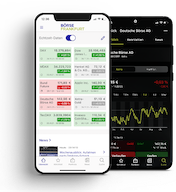pfp Advisory: "Everything pushes for gold"

Fund manager Christoph Frank examines the interaction between gold and the US dollar—including his own long-term view on the precious metal in his portfolio.
October 13, 2025. FRANKFURT (pfp Advisory). “All that glitters is gold, and all that glitters is gold.” Who would be the investors who would contradict Johann Wolfgang von Goethe or even act contrary to his words? And so, like Gretchen in “Faust,” they are indeed rushing toward gold in 2025, and with all their might.
At the beginning of 2024, the price of gold was still around $2,000 per troy ounce, but by March 2025 it had climbed to $3,000. Just over half a year later, in October 2025, it had already broken through the next thousand-dollar mark at $4,000. With a year-to-date return of over 50 percent, 2025 could be the most glittering year for gold since 1980.
At the same time, I am receiving more and more inquiries about my personal opinion on gold. This has remained unchanged for a quarter of a century, which may be disappointing for some: for me, gold is a hedge that is unfortunately necessary in a world of unsound debt policies, and I would weight it at 5 to 15 percent in my portfolio, depending on individual risk appetite. Even the rapid rally of the past two years has not changed this long-standing assessment.
Personally, I find it surprising that gold is only now being rediscovered. After all, the precious metal has been on an upward trend since 1999/2001, when its price formed a double bottom at around US$255. This was followed by around ten truly golden years. Long-term investors had already multiplied their investments and were able to comfortably “sit out” the subsequent ten years of volatile sideways movement, or, if they are better market timers than I am, even take a break. Either way, such enormous buying pressure had apparently built up in the market in the meantime that, after several futile attempts, the gold price broke out dynamically in 2024 and “exploded” from $2,000 to $4,000 within two years.
However, it appears that this gold rally largely took place without the involvement of larger investor groups, at least until this recent surge. In my opinion, this has indeed changed recently in terms of how important investor groups (including central banks) perceive gold: as a safe haven that may be more secure than the US dollar.
If this assumption is correct, it would truly be a revolution. Until now, the rule in times of crisis has always been: invest in the US dollar! Whenever there was turmoil somewhere in the world, whether due to war or a severe financial crisis, investors fled to this “safe haven.”
In contrast, 2025 seems to be all about getting out of the US dollar! Or to put it less casually: confidence in the financial stability of the US and thus the US dollar is declining. Apparently, more and more investors find it attractive to buy “interest-free” gold instead of ten-year US government bonds yielding around 4 percent. They value gold as crisis insurance and a strategic asset that, unlike dollar bills, cannot be arbitrarily increased and is largely independent of the whims of a government.
For me, the rising price of gold, like the rising price of Bitcoin, is a vote of no confidence in paper currencies, because gold is also rising relative to the euro, the yen, the Swiss franc, and the Singapore dollar, for example. It is interesting to note that the world's reserve currency, the US dollar, is now also being viewed with increasing suspicion. There have been indications of this in the recent past, for example during the stock market sell-off in April, when the US dollar was hardly considered a safe haven, but gold certainly was.
Who can blame investors?
In the US, government debt continues to rise from a very high level, while the countermeasures taken by political leaders seem half-hearted at best. Instead of reducing debt, the Trump administration now appears to be focusing on lowering the interest burden through lower key interest rates, thereby attacking the independence of the US Federal Reserve. This destroys confidence, as does Trump's erratic economic policy, which relies more on coercion and tariffs than on cooperation and trust.
If this trend continues, it could well develop into a “turning point.” The crucial question is whether the future will follow the “script” of the debt crisis in the 1970s, when Richard Nixon abandoned the gold standard for the US dollar, attacked the independence of the Federal Reserve, and ultimately pushed through lower interest rates, causing inflation to spiral out of control.
At that time, everything was already pushing toward gold: its price rose more than twentyfold within a few years, from a fixed price of $35 to $850. However, even the most enthusiastic gold fans should not wish for a repeat of this rally. As in the 1970s, it would likely be accompanied by a major crisis.
By Christoph Frank, October 13, 2025, © pfp Advisory
About the author
Christoph Frank is managing partner of pfp Advisory GmbH. Together with his partner Roger Peeters, the expert, who has been active on the German stock market for over 25 years, manages DWS Concept Platow (WKN DWSK62), a multi-award-winning stock-picking fund launched in 2006, as well as pfp Advisory Aktien Mittelstand Premium (WKN A3CM1J), which was launched in August 2021. For more information, visit www.pfp-advisory.de. Frank writes regularly for the Frankfurt Stock Exchange.
More articles from this columnist
| Time | Title |
|---|




